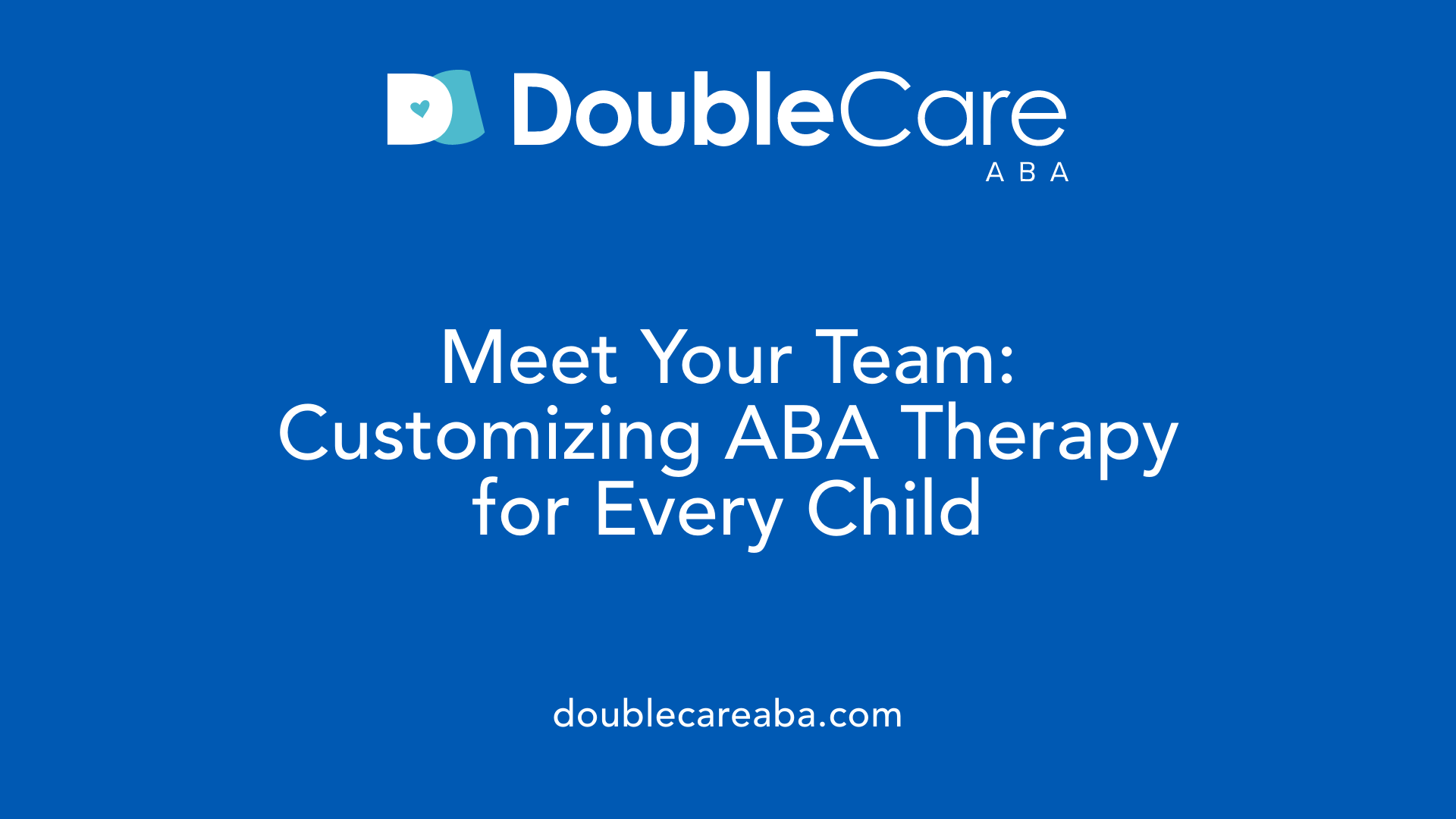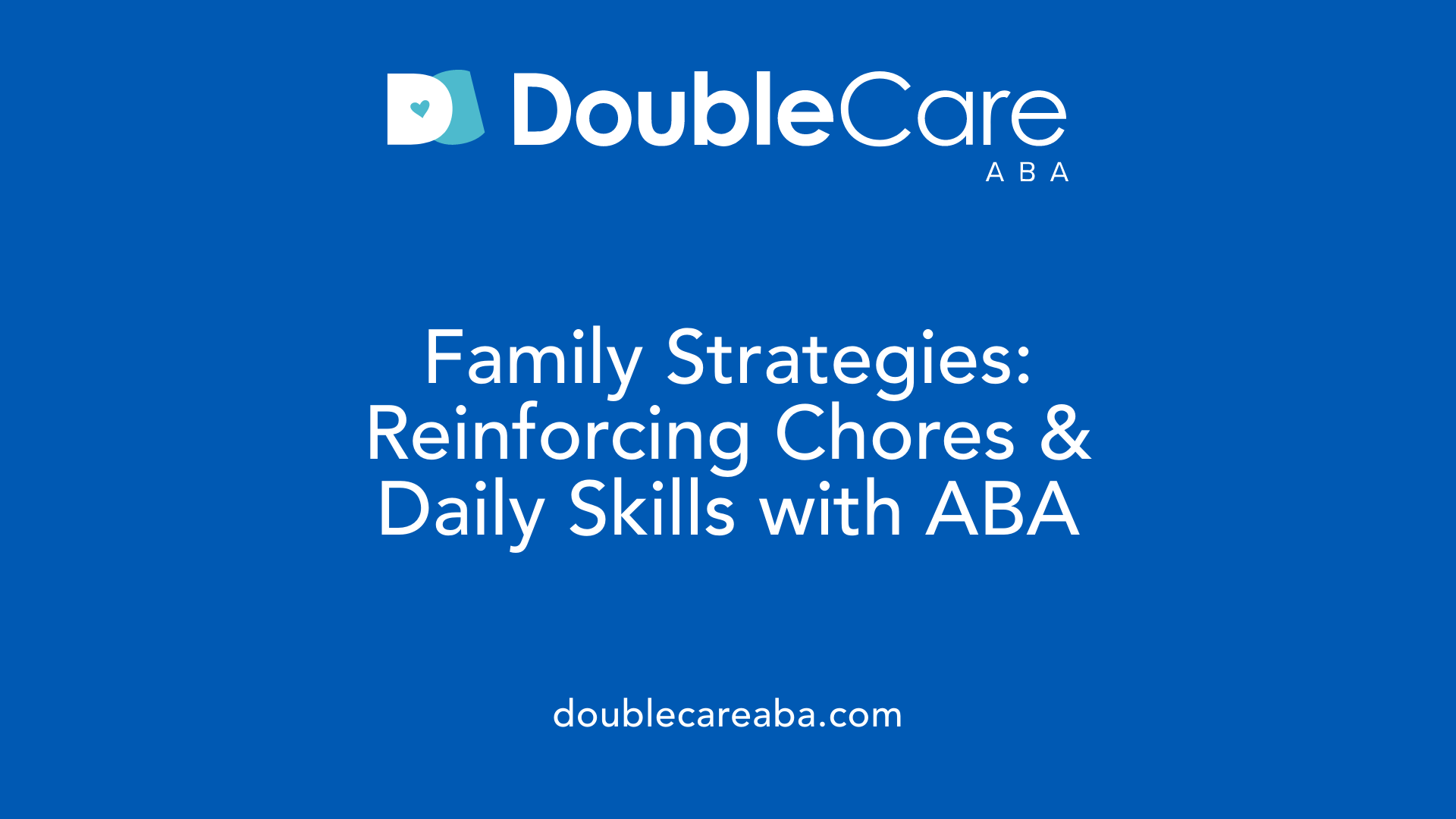How to Use ABA to Teach Household Chores
Empowering Independence: Using ABA to Teach Daily Chores

Introducing ABA and Its Role in Skill Development
Applied Behavior Analysis (ABA) therapy is a scientifically validated approach to help individuals with autism spectrum disorder (ASD) acquire essential life skills and reduce challenging behaviors. This article explores how ABA principles are specifically applied to teaching household chores, fostering independence and confidence in familiar home environments. We delve into the therapy's core components, customization for individual needs, and evidence supporting its effectiveness, providing insights into practical implementation strategies that benefit children and caregivers alike.
Understanding ABA Therapy and Its Application in Autism Support
What is Applied Behavior Analysis (ABA) therapy and how is it used to support individuals with autism?
Applied Behavior Analysis (ABA) therapy is a scientific and evidence-based approach designed to help individuals with autism develop vital skills while reducing challenging behaviors. This method uses principles of learning such as positive reinforcement, task analysis, prompting, and modeling. Behavior analysts develop personalized intervention plans that reflect the unique needs of each child. These plans are data-driven, allowing ongoing monitoring and adjustment based on individual progress.
Definition and Core Principles of ABA Therapy
ABA therapy focuses on understanding the relationship between antecedents, behaviors, and consequences to encourage positive behavior changes. Core techniques include:
- Positive Reinforcement: Encouraging desired behaviors by rewarding them.
- Task Analysis: Breaking complex tasks into smaller, manageable steps.
- Prompting and Modeling: Providing support and demonstrations to teach new skills.
These strategies work together to build independence and enhance learning in a structured but supportive way.
Objectives of ABA for Individuals with Autism
The primary goals of ABA therapy are to improve communication, social skills, daily living activities, and academic abilities. ABA aims to promote independence and confidence by teaching skills in natural environments such as home or school. It supports the development of self-help skills, family interactions, verbal behavior, and social engagement.
How ABA Targets Communication, Social, Daily Living, and Academic Skills
ABA programs address multiple developmental areas:
- Communication: Increasing verbal and non-verbal skills.
- Social Skills: Enhancing peer interaction and social understanding.
- Daily Living: Teaching grooming, hygiene, meal preparation, and chores through systematic task breakdown.
- Academic Skills: Supporting learning through tailored educational interventions.
Parents and caregivers are often trained to reinforce these strategies at home, helping maintain gains and generalize skills across settings.
This comprehensive approach ensures that individuals with autism can achieve meaningful progress in all aspects of their lives, promoting greater independence and community participation.
Who Delivers ABA Therapy and How Are Programs Tailored?

Who typically provides applied behavior analysis therapy sessions?
ABA therapy is delivered by a team of qualified professionals, primarily including Board Certified Behavior Analysts (BCBAs) who design and oversee individualized treatment plans. Registered Behavior Technicians (RBTs) and therapists trained in ABA techniques implement these interventions under BCBA supervision. These practitioners use reward-based learning, positive reinforcement, and systematic data collection to support skill development and reduce challenging behaviors.
Caregivers and family members also play a vital role in therapy success. Professionals provide parent training to equip families with strategies to reinforce skills and behavior management in everyday settings, making therapy more consistent and effective.
How is ABA therapy customized for each individual with autism?
Customization begins with thorough assessments of the individual's strengths, challenges, and development, often utilizing tools like the ABLLS or Vineland Adaptive Behavior Scales. Based on these evaluations, therapists develop personalized treatment plans with clear, measurable goals that focus on areas such as communication, social skills, daily living skills, and behavior reduction.
Programs are flexible and adapt over time as progress is monitored through continuous data collection. In-home consultations and parent training sessions allow strategies to be tailored to the child's daily environment, helping incorporate therapy into routines naturally. Parent-implemented interventions, like play-based activities under guidance, further support generalization of skills across contexts.
Educational settings also benefit from individualized ABA approaches, where teachers trained in ABA methods help integrate therapy goals into classroom activities, maximizing engagement and learning outcomes.
This collaborative, evolving approach ensures therapy addresses each child’s unique needs effectively, with strong partnerships between professionals and families.
Implementing ABA Strategies to Teach Household Chores

How does task analysis break chores into manageable steps?
Task analysis is a foundational ABA strategy that breaks down complex chores into smaller, manageable steps. This approach makes learning less overwhelming for children with autism by focusing on one step at a time. For example, putting on a coat may be divided into picking up the coat, inserting one arm, then the other, and finally fastening any buttons or zippers.
What visual supports help in teaching chores?
Visual supports such as checklists and picture schedules act as helpful guides for children during tasks. These tools provide clear, step-by-step prompts that encourage independence and reduce confusion. A picture schedule for meal preparation might show images of washing hands, gathering ingredients, assembling a sandwich, and cleaning up afterwards.
How is positive reinforcement used to motivate and maintain behaviors?
Positive reinforcement plays a critical role in sustaining effort and encouraging the repetition of newly learned behaviors. Praise, tokens, or small rewards are given upon task completion or progress on individual steps, motivating children to continue practicing household chores.
What chaining techniques are used for skill acquisition?
Chaining methods like forward chaining, backward chaining, and total task training help teach sequences of chores efficiently. Forward chaining teaches tasks step-by-step from the beginning; backward chaining starts with the last step, allowing the child to complete the task early and gain confidence; total task training involves teaching all steps together with assistance as needed.
What are some examples of chores taught using ABA?
ABA programs commonly target chores such as putting on a coat, toilet training, meal preparation, and household cleaning. Each task is broken down via task analysis, supported with visual aids and reinforced through positive feedback, helping children build independence in their natural home setting.
In-home ABA Therapy: Enhancing Learning in Natural Environments

Benefits of conducting ABA therapy at home versus centers
In-home ABA therapy provides a flexible alternative to center-based programs, allowing children with autism to receive therapy in a familiar, comfortable environment. This setting reduces anxiety and promotes engagement since children are surrounded by everyday surroundings they recognize. The home atmosphere fosters natural opportunities to practice skills relevant to daily life, such as self-care and household tasks, which may be less accessible in clinical or educational centers.
Development of social, self-help, and verbal skills in familiar settings
Performing ABA therapy at home supports the growth of social interaction, verbal communication, self-help skills, and independence. Children learn through modeling and reinforcement in activities like family interactions, meal preparation, and daily routines, which are embedded in their natural environments. This direct application encourages generalization of skills across contexts.
Opportunities for caregiver training to reinforce skills
In-home therapy provides caregivers with hands-on training and coaching, enabling them to apply ABA strategies consistently. Parental involvement leads to increased verbalizations, spontaneous speech, and social engagement in children. Training caregivers also supports the maintenance of behavior improvements and skill development beyond therapy sessions.
Natural Environment Teaching (NET) and skill generalization
ABA utilizes Natural Environment Teaching methods, emphasizing learning within real-life settings like the home. Task analyses break down complex tasks into manageable steps, using prompting, visual supports, and reinforcement to teach skills. By practicing in the natural environment, children are more likely to generalize new behaviors to other situations and communities.
Role of structured routines and visual schedules in reducing anxiety
Structured routines combined with visual schedules help children with autism anticipate daily activities and transitions. Techniques such as 'first-then' statements, clear warnings, and visual timers reduce anxiety and support smoother behavior during changes. This predictability builds confidence and comfort in managing personal care and household responsibilities.
What are the main goals of ABA therapy for individuals with autism?
ABA therapy seeks to enhance communication, social skills, and adaptive behaviors, encouraging independence in daily living. Goals focus on increasing helpful behaviors—such as language, self-care, and social engagement—while decreasing challenging behaviors using positive reinforcement and tailored interventions. These goals are measurable and individualized, and therapy progress is monitored with data and collaboration among therapists, caregivers, and educators to ensure real-world application and improved quality of life.
| Topic | Key Points | Practical Example |
|---|---|---|
| In-home ABA vs. Center | Flexible, comfortable environment promotes engagement with relevant daily activities | Learning toileting skills at home |
| Skill Development in Natural Setting | Promotes social, verbal, and self-help skills through family interactions and routines | Practicing meal preparation with caregiver |
| Caregiver Training | Builds consistent use of ABA strategies, enhancing skill generalization | Coaching parents to reinforce communication |
| Natural Environment Teaching (NET) | Breaks tasks into steps with prompts and visual aids to teach and generalize skills | Using checklists for household chores |
| Structured Routines & Visuals | Reduces anxiety, supports transitions, and increases predictability | Employing visual schedules and 'first-then' cues |
In summary, in-home ABA therapy integrates evidence-based techniques into familiar surroundings, encouraging practical skill development and smoother transitions for children with autism, with active caregiver participation enhancing long-term success.
Evidence Supporting ABA Effectiveness for Autism and Daily Living Skills

What evidence supports the effectiveness of ABA therapy for autism?
Numerous research studies underscore the effectiveness of Applied Behavior Analysis (ABA) therapy in improving cognitive, communication, and adaptive skills among children with autism spectrum disorder (ASD). For instance, a 2013 report by Cincinnati Children’s Hospital Medical Center found that home-based ABA interventions can lead to meaningful improvements in IQ, communication, gesture use, and play skills.
Parental involvement and home-based programs have been shown to increase spontaneous speech, social interactions, and overall child engagement. This engagement fosters better skill acquisition and retention through consistent reinforcement within familiar environments.
Meta-analyses involving large groups of children reveal medium to large effect sizes in gains related to IQ and language, highlighting the importance of intensive, individualized ABA programs that incorporate parental participation. While improvements in symptom severity and parental stress need further verification, ABA therapy consistently demonstrates positive developmental outcomes.
Health authorities such as the Health Resources & Services Administration (HRSA) have recognized telehealth ABA services as effective, expanding access especially for families in rural or underserved areas. These services utilize videoconferencing tools to maintain therapy quality and continuity remotely.
Ongoing progress monitoring is a core component of ABA, relying on data-driven assessments. Tools such as the Assessment of Basic Language and Learning Skills (ABLLS) and Vineland Adaptive Behavior Scales guide individualized goal setting and help track intervention success. Single-opportunity and multiple-opportunity data collection inform ongoing adjustments to therapy plans, ensuring continuous, measurable growth.
The combination of rigorous research findings, positive parental involvement, adaptive delivery methods like telehealth, and systematic progress measurement supports ABA as an evidence-based approach that effectively promotes cognitive and adaptive skills in children with autism.
Practical Tips for Families: Supporting Household Chores with ABA

Incorporating Visual Timers, Schedules, and 'First-Then' Statements
Using visual supports like timers and schedules helps children with autism understand what to expect during household chores, making transitions between tasks smoother. 'First-then' statements provide clear guidance and motivation by outlining what needs to be done before a preferred activity, reducing anxiety and enhancing cooperation.
Adapting Chores with Specialized Tools for Individual Needs
To accommodate varying abilities, families can incorporate adaptive tools such as specialized utensils for meal prep or ergonomic cleaning devices. These tools promote efficiency and independence by making tasks more accessible and comfortable for the child.
Involving Children Through Prompting, Modeling, and Positive Feedback
Parents and caregivers can engage children in chores using prompting and modeling techniques that demonstrate each step clearly. Consistent positive reinforcement—like praise or small rewards—encourages continued effort and helps children build confidence and responsibility in their household roles.
Teaching Safety Skills and Decision-Making in Chore Routines
ABA strategies support teaching important safety skills throughout chore routines, such as managing water temperature or knowing when to ask for help. Additionally, problem-solving and decision-making skills are developed through guided practice and reinforcement to foster independence in everyday tasks.
Benefits of Consistent Routines and Caregiver Collaboration for Generalization
Establishing structured routines with caregiver collaboration ensures skills learned during chores generalize across settings. Consistency helps children become proficient and comfortable with their responsibilities, ultimately enhancing independence and supporting smoother integration into daily life.
Building Independence Through ABA in Daily Life
Applied Behavior Analysis offers a structured, proven approach to teaching household chores that enhances independence and quality of life for individuals with autism. By breaking tasks into achievable steps, using reinforcement and visual supports, and tailoring interventions to individual needs, families and therapists can create effective learning environments that extend beyond therapy sessions. In-home ABA therapy further supports this by embedding skill-building in natural settings and involving caregivers as active partners. The growing body of evidence underscores ABA's capacity to foster meaningful developmental gains when implemented with fidelity. Ultimately, embracing ABA strategies empowers children with autism to confidently manage daily responsibilities, participate actively in family routines, and thrive within their communities.
References
- Home-Based Applied Behavior Analysis Therapy
- How ABA Therapy Supports Independence in Daily Activities
- The Role of Task Analysis and Chaining: Articles: Indiana ...
- ABA Strategies for Smoother Routines at Home
- How ABA Therapy Helps with Daily Living Skills
- Applied Behavior Analysis (ABA)
- The Top 10 Reasons Children With Autism Deserve ABA
- 6 Benefits of ABA Therapy for Children with Autism
- Applied Behavior Analysis (ABA)
- 5 Benefits Of ABA Therapy For Autism
















